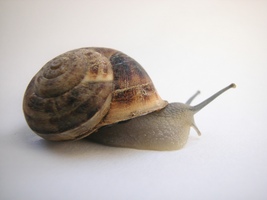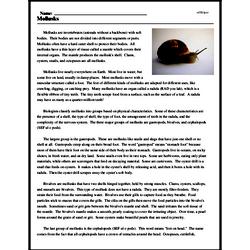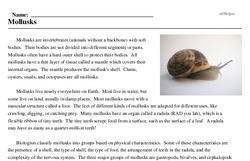Mollusks
Mollusks are invertebrates (animals without a backbone) with soft bodies. Their bodies are not divided into different segments or parts. Mollusks often have a hard outer shell to protect their bodies. All mollusks have a thin layer of tissue called a mantle which covers their internal organs. The mantle produces the mollusk's shell. Clams, oysters, snails, and octopuses are all mollusks.
Mollusks live nearly everywhere on Earth. Most live in water, but some live on land, usually in damp places. Most mollusks move with a muscular structure called a foot. The feet of different kinds of mollusks are adapted for different uses, like crawling, digging, or catching prey. Many mollusks have an organ called a radula (RAD you lah), which is a flexible ribbon of tiny teeth. The tiny teeth scrape food from a surface, such as the surface of a leaf. A radula may have as many as a quarter-million teeth!
Biologists classify mollusks into groups based on physical characteristics. Some of these characteristics are the presence of a shell, the type of shell, the type of foot, the arrangement of teeth in the radula, and the complexity of the nervous system. The three major groups of mollusks are gastropods, bivalves, and cephalopods (SEF ul o pods).




